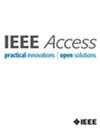基于蒙特卡罗集成的高效重要采样水下无线光通信仿真
IF 3.4
3区 计算机科学
Q2 COMPUTER SCIENCE, INFORMATION SYSTEMS
引用次数: 0
摘要
水下光通信已被提出用于各种应用,从海岸保护到短程潜艇通信。专用通信系统的开发需要用有效的方法对用例进行密集的模拟,无论是在精度方面还是在计算时间方面。然而,由于光在水中传播的物理机制的复杂性,这些模拟是具有挑战性的,这涉及到构成传播介质的各种粒子上的许多散射事件。以前的工具主要依赖于基于蒙特卡罗模拟的Prahl算法,因此很难改进。最近,一个新的框架(以下简称为Xiao1)已经开发出来,使用传播的积分形式化和蒙特卡罗积分进行计算,与相同精度水平的旧Prahl技术相比,实现了改进的计算时间。本文在此框架的基础上,提出在蒙特卡罗积分算法中进一步引入重要采样。它计算每个散射点周围的子域,并在该子域内选择一个重要的连接样本。本文给出了该方法的完整推导过程。然后给出了几个案例研究,仿真结果表明这种新方法的性能明显更好。根据配置的不同,与Prahl相比,这些模拟的计算时间减少了1.09到4048倍,与Xiao1相比减少了1.07到2134倍。本文章由计算机程序翻译,如有差异,请以英文原文为准。
Monte Carlo Integration With Efficient Importance Sampling for Underwater Wireless Optical Communication Simulation
Underwater optical communications have been proposed for various applications, ranging from coastal protection to short-range submarine communications. The development of dedicated communication systems requires intensive simulation of use cases with efficient methods, both in terms of accuracy and computational time. However, these simulations are challenging due to the complexity of the physical mechanisms of light propagation in water, which involves numerous scattering events on the various particles constituting the propagation medium. Previous tools have primarily relied on the Prahl algorithm, based on Monte Carlo simulation, and are therefore difficult to improve. Recently, a new framework, hereafter referred to as Xiao1, has been developed using an integral formalization of the propagation and Monte Carlo integration for its computation, achieving improved computational times compared to older Prahl techniques for the same level of accuracy. This paper builds upon this framework and proposes to incorporate further importance sampling into the Monte Carlo integration algorithm. It calculates a sub-domain around the receiver for each scattering point and selects a connecting sample with importance within this sub-domain. This paper presents the complete derivation of this new method. It then presents several case studies in which the simulations demonstrate that this new method performs significantly better. Depending on the configuration, these simulations exhibit a reduction in computational times by a factor ranging from 1.09 to 4048 compared with Prahl and from 1.07 to 2134 compared with Xiao1.
求助全文
通过发布文献求助,成功后即可免费获取论文全文。
去求助
来源期刊

IEEE Access
COMPUTER SCIENCE, INFORMATION SYSTEMSENGIN-ENGINEERING, ELECTRICAL & ELECTRONIC
CiteScore
9.80
自引率
7.70%
发文量
6673
审稿时长
6 weeks
期刊介绍:
IEEE Access® is a multidisciplinary, open access (OA), applications-oriented, all-electronic archival journal that continuously presents the results of original research or development across all of IEEE''s fields of interest.
IEEE Access will publish articles that are of high interest to readers, original, technically correct, and clearly presented. Supported by author publication charges (APC), its hallmarks are a rapid peer review and publication process with open access to all readers. Unlike IEEE''s traditional Transactions or Journals, reviews are "binary", in that reviewers will either Accept or Reject an article in the form it is submitted in order to achieve rapid turnaround. Especially encouraged are submissions on:
Multidisciplinary topics, or applications-oriented articles and negative results that do not fit within the scope of IEEE''s traditional journals.
Practical articles discussing new experiments or measurement techniques, interesting solutions to engineering.
Development of new or improved fabrication or manufacturing techniques.
Reviews or survey articles of new or evolving fields oriented to assist others in understanding the new area.
 求助内容:
求助内容: 应助结果提醒方式:
应助结果提醒方式:


